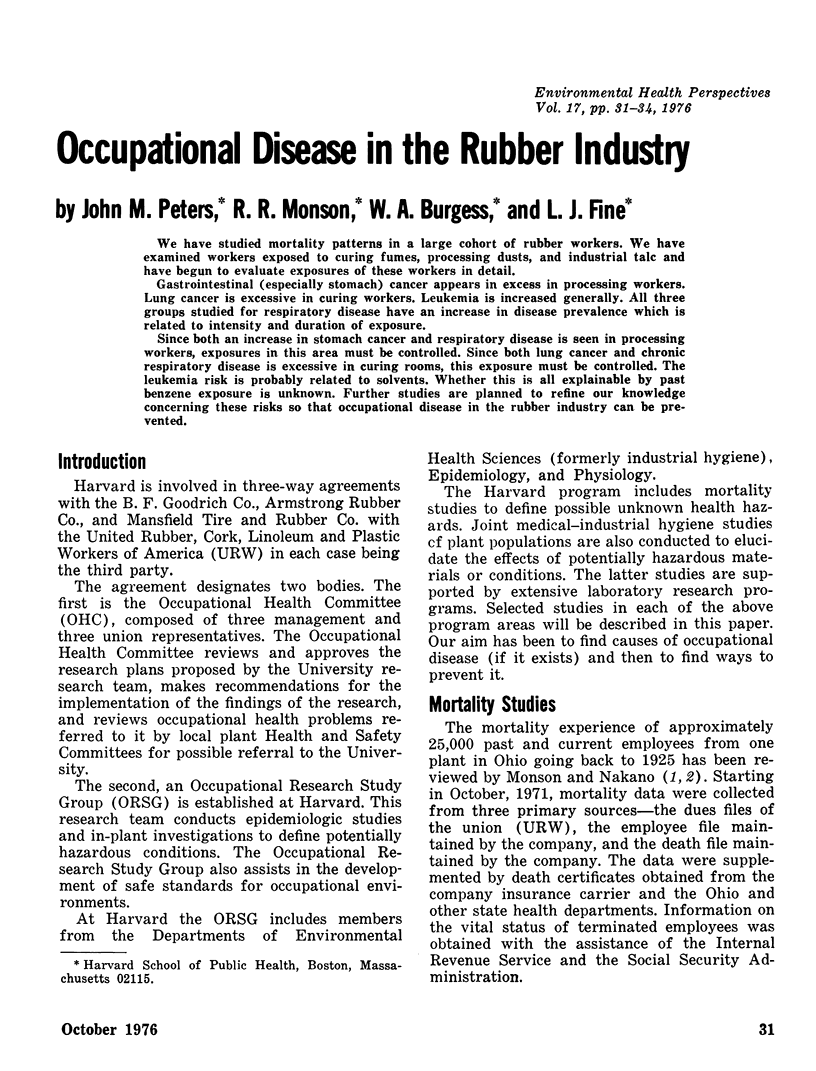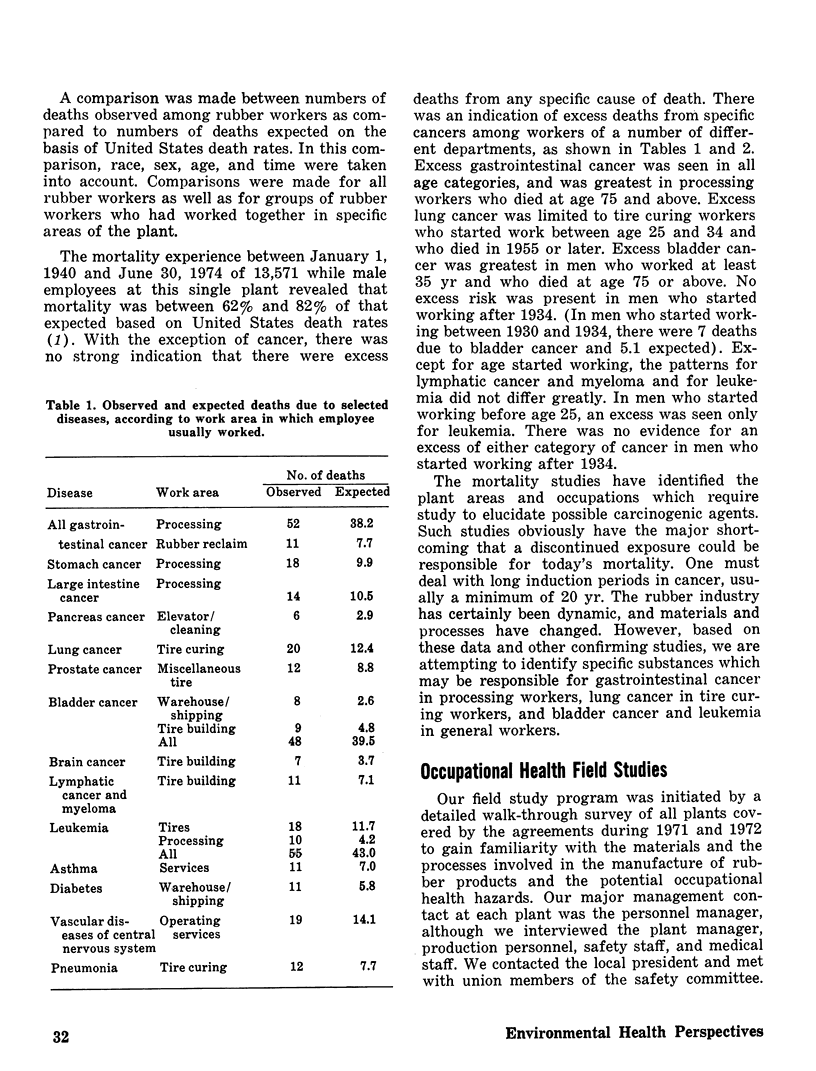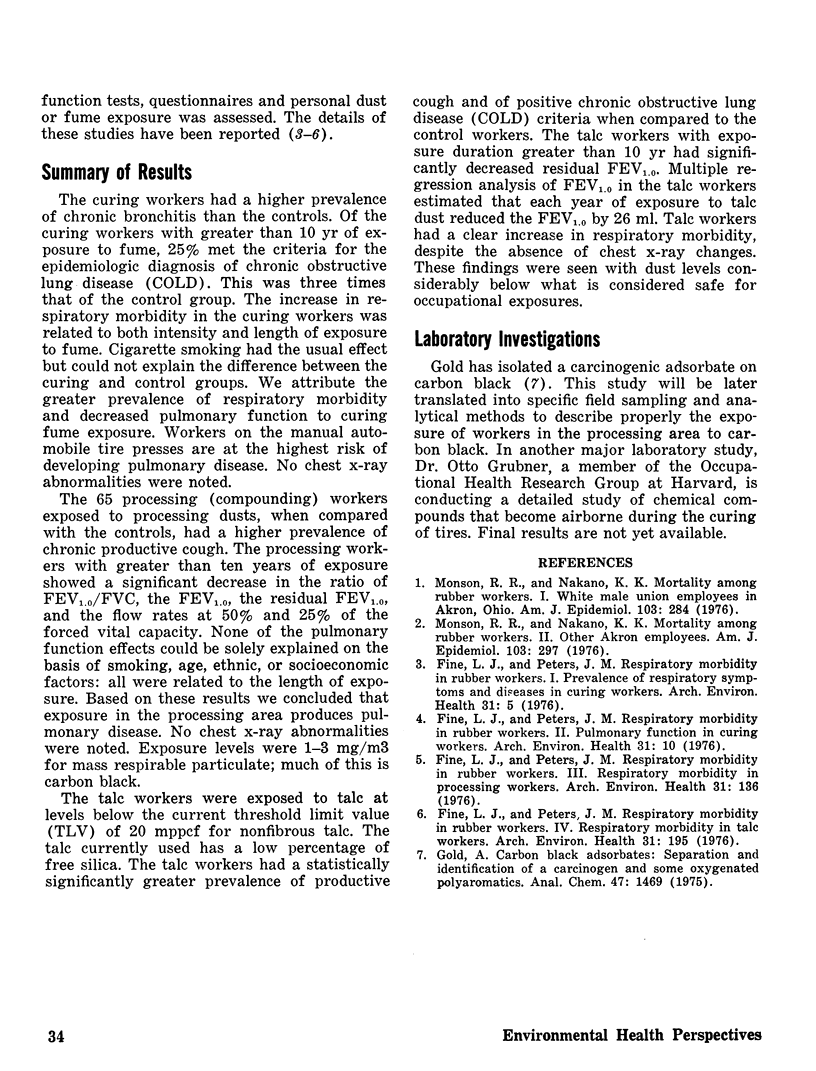Abstract
We have studied mortality patterns in a large cohort of rubber workers. We have examined workers exposed to curing fumes, processing dusts, and industrial talc and have begun to evaluate exposures of these workers in detail. Gastrointestinal (especially stomach) cancer appears in excess in processing workers. Lung cancer is excessive in curing workers. Leukemia is increased generally. All three groups studied for respiratory disease have an increase in disease prevalence which is related to intensity and duration of exposure. Since both an increase in stomach cancer and respiratory disease is seen in processing workers, exposures in this area must be controlled. Since both lung cancer and chronic respiratory disease is excessive in curing rooms, this exposure must be controlled. The leukemia risk is probably related to solvents. Whether this is all explainable by past benzene exposure is unknown. Further studies are planned to refine our knowledge concerning these risks so that occupational disease in the rubber industry can be prevented.
Full text
PDF



Selected References
These references are in PubMed. This may not be the complete list of references from this article.
- Fine L. J., Peters J. M., Burgess W. A., Di Berardinis L. J. Studies of respiratory morbidity in rubber workers. Part IV. Respiratory morbidity in talc workers. Arch Environ Health. 1976 Jul-Aug;31(4):195–200. doi: 10.1080/00039896.1976.10667219. [DOI] [PubMed] [Google Scholar]
- Fine L. J., Peters J. M. Respiratory morbidity in rubber workers: I. Prevalence of respiratory symptoms and disease in curing workers. Arch Environ Health. 1976 Jan-Feb;31(1):5–9. [PubMed] [Google Scholar]
- Fine L. J., Peters J. M. Respiratory morbidity in rubber workers: II. Pulmonary function in curing workers. Arch Environ Health. 1976 Jan-Feb;31(1):10–14. doi: 10.1080/00039896.1976.10667182. [DOI] [PubMed] [Google Scholar]
- Fine L. J., Peters J. M. Studies of respiratory morbidity in rubber workers. Part III. Respiratory morbidity in processing workers. Arch Environ Health. 1976 May-Jun;31(3):136–140. doi: 10.1080/00039896.1976.10667207. [DOI] [PubMed] [Google Scholar]
- Gold A. Carbon black absorbates: separation and identification of a carcinogen and some oxygenated polyaromatics. Anal Chem. 1975 Jul;47(8):1469–1472. doi: 10.1021/ac60358a002. [DOI] [PubMed] [Google Scholar]
- Monson R. R., Nakano K. K. Mortality among rubber workers. I. White male union employees in Akron, Ohio. Am J Epidemiol. 1976 Mar;103(3):284–296. doi: 10.1093/oxfordjournals.aje.a112226. [DOI] [PubMed] [Google Scholar]
- Monson R. R., Nakano K. K. Mortality among rubber workers. II. Other employees. Am J Epidemiol. 1976 Mar;103(3):297–303. doi: 10.1093/oxfordjournals.aje.a112227. [DOI] [PubMed] [Google Scholar]


